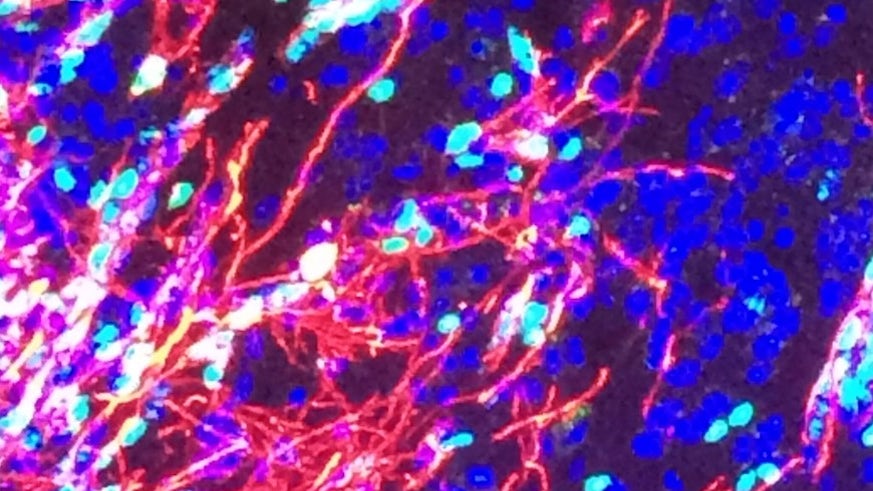Studying Glioblastoma
24 October 2016

22-29 October 2016 is International Brain Tumour Awareness Week. Jo and Bhavana, new PhD students in Dr Florian Siebzehnrubl's lab, share their thoughts on studying Glioblastoma - the most common and lethal of all the brain cancers.
Tell us about your academic background and why you decided to study Glioblastoma at the European Cancer Stem Cell Research Institute.
Jo: I studied for a BSc in Pharmacology at Manchester University. During my BSc, I completed a placement year in industry where I had the opportunity to undertake a side project working with Glioblastoma cells. I found them fascinating to work with – more so than my main project – so when I saw the PhD opening at the Institute, it seemed like the perfect fit.
Bhavana: I completed a BSc in Biomedical Science at Newcastle University, followed by a Masters at Bristol University, which had a focus on colorectal cancer. Originally, I didn’t necessarily want to pursue a career in research, but after doing a couple of placements during my degree I realised that research was the perfect niche for me.
Both my Masters and final year undergraduate project were on colorectal cancer but I decided to switch to Glioblastoma for my PhD. It’s on Cancer Research UK’s list of cancers with unmet needs and I find it interesting to work in an area where there is still a lot to discover.
Jo: I agree. Glioblastoma still has a very poor prognosis – outcomes have hardly changed in 100 years. It’s rewarding to work on something where there is still a lot that’s not understood, as your research can potentially have more of an impact. It’s always nice to feel that your work is benefiting someone.
What will your PhD be focussing on?
Bhavana: My work is mainly concerned with the early stages of the disease. I am concentrating on the mutations driving the early transformation that leads to Glioblastoma. I’ll be looking at different cells and mutations and how they react, and how this then affects other cells in the local environment.
Jo: There are lots of different cells within tumours but models used in research don’t always accurately reflect that. As result, lots of drugs that work in a laboratory environment do not work in humans. Using technology developed by previous PhD students, I’ll be looking at developing a drug screening model that more accurately represents the tumour in the brain. If my project is successful, it will mean more accurate results, as well as a reduction in animal models used for testing.
What do you like about working at the European Cancer Stem Cell Research Institute?
Jo: There are lots of different talks on different subjects, so there’s always a chance to learn something new. I’m also partly based in the University’s Neuroscience and Mental Health Research Institute, where I’m studying Schizophrenia so I enjoy the crossover between these topics.
Bhavana: It’s such a big institute with lots of different research groups working on different types of cancers – so there is a lot of opportunity for collaboration and to learn from others.